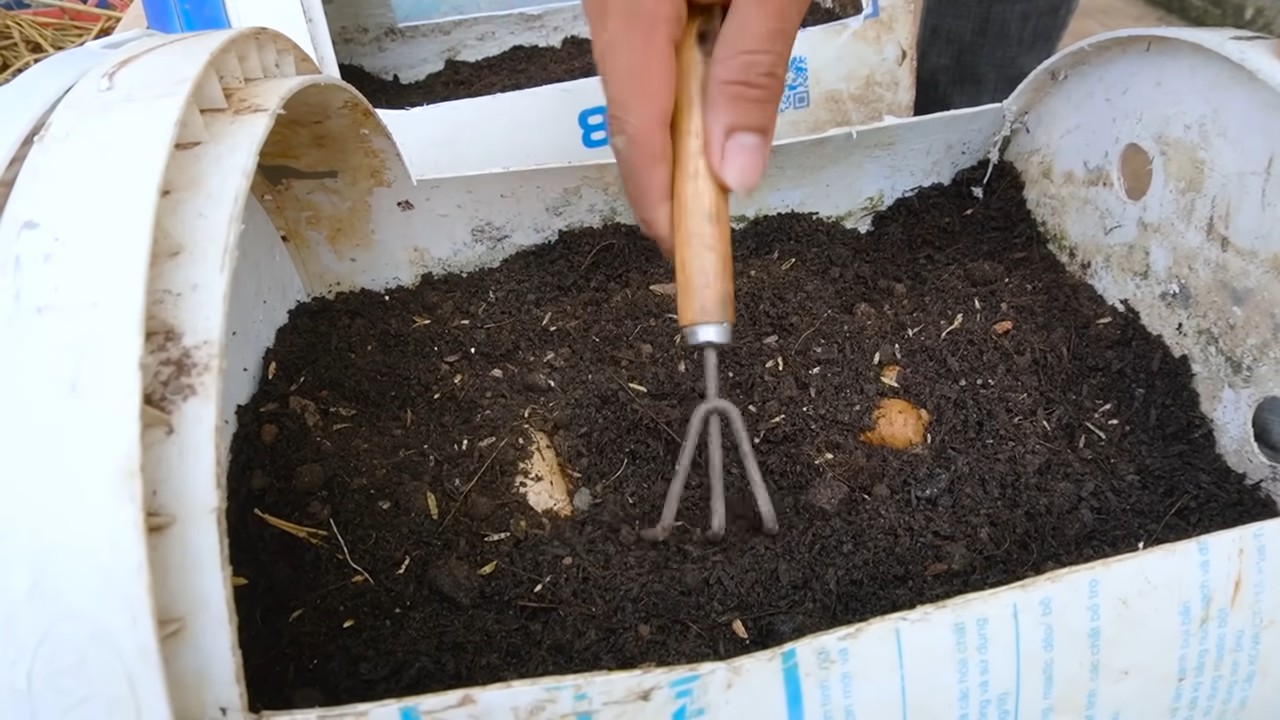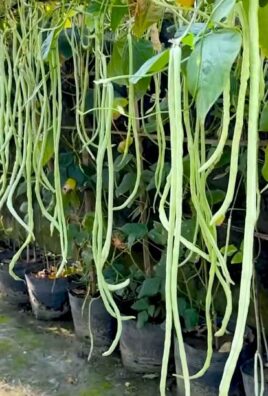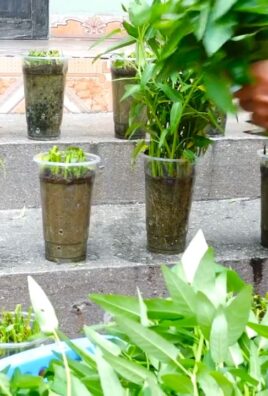Yellow watermelon growing tips are what you need to unlock a vibrant splash of sunshine right in your own backyard! Forget the grocery store – imagine biting into a crisp, sweet, yellow watermelon you nurtured from seed to juicy perfection. Sounds amazing, right?
For centuries, watermelons have been a symbol of summer, abundance, and community gatherings. While the familiar red variety dominates supermarket shelves, yellow watermelons offer a unique twist on this classic fruit. Their history traces back to Africa, just like their red cousins, but selective breeding has brought out their distinct color and often, a sweeter, honey-like flavor.
But why should you bother with these sunny delights? Well, besides the sheer novelty and bragging rights, yellow watermelon growing tips can help you diversify your garden, impress your friends, and enjoy a healthier, more sustainable lifestyle. Plus, let’s be honest, who wouldn’t want to add a pop of color to their summer salads and desserts? I’m here to guide you through the process, sharing easy-to-follow DIY tricks and hacks that will transform your garden into a watermelon wonderland. Get ready to roll up your sleeves and discover the secrets to cultivating these golden gems – it’s easier than you think!

Gelbe Wassermelone Anbauen: Dein DIY-Guide für eine süße Überraschung!
Hey Gartenfreunde! Habt ihr schon mal von gelben Wassermelonen gehört? Sie sind nicht nur super lecker, sondern auch ein echter Hingucker! Ich zeige euch heute, wie ihr diese sonnigen Früchte selbst anbauen könnt. Keine Angst, es ist einfacher als ihr denkt!
Was du brauchst: Deine Einkaufsliste
Bevor wir loslegen, hier eine Liste mit allem, was du für dein gelbes Wassermelonen-Abenteuer brauchst:
* Gelbe Wassermelonen-Samen: Achtet darauf, dass ihr eine Sorte wählt, die für euer Klima geeignet ist. Beliebte Sorten sind z.B. “Yellow Doll”, “Golden Midget” oder “Tendersweet Orange”.
* Anzuchttöpfe oder Eierkartons: Für die Voranzucht im Haus.
* Anzuchterde: Spezielle Erde für die Anzucht von Sämlingen.
* Gartenerde: Gute, nährstoffreiche Erde für das Beet.
* Kompost oder gut verrotteter Mist: Zur Bodenverbesserung.
* Gartenvlies (optional): Zum Schutz der jungen Pflanzen vor Kälte und Schädlingen.
* Gießkanne oder Gartenschlauch: Zum Bewässern.
* Mulchmaterial (z.B. Stroh oder Holzhackschnitzel): Um die Feuchtigkeit im Boden zu halten und Unkraut zu unterdrücken.
* Pflanzstäbe oder Rankgitter (optional): Für Sorten, die zum Klettern neigen.
* Gartenschere: Zum Ausgeizen und Entfernen von beschädigten Blättern.
* Geduld und Liebe: Das Wichtigste überhaupt!
Phase 1: Die Voranzucht – Dein Startvorteil
Gelbe Wassermelonen brauchen eine relativ lange Wachstumsperiode. Deshalb ist es ratsam, sie im Haus vorzuziehen. So haben sie einen kleinen Vorsprung, wenn sie ins Freie kommen.
1. Samen vorbereiten: Um die Keimung zu beschleunigen, könnt ihr die Samen vor dem Einpflanzen für 24 Stunden in lauwarmes Wasser legen. Das weicht die harte Schale auf und erleichtert das Keimen.
2. Aussaat: Füllt eure Anzuchttöpfe mit Anzuchterde. Drückt die Erde leicht an und legt pro Topf 1-2 Samen etwa 2-3 cm tief in die Erde. Bedeckt die Samen mit Erde und gießt sie vorsichtig an.
3. Standort: Stellt die Töpfe an einen warmen, hellen Ort. Eine Fensterbank über der Heizung ist ideal. Die optimale Keimtemperatur liegt bei 25-30°C.
4. Feuchtigkeit: Haltet die Erde gleichmäßig feucht, aber nicht nass. Am besten sprüht ihr die Erde regelmäßig mit einer Sprühflasche an.
5. Keimung: Nach etwa 1-2 Wochen sollten die ersten Keimlinge zu sehen sein. Sobald die Pflänzchen zwei bis drei Blätter haben, könnt ihr sie in größere Töpfe umpflanzen.
Phase 2: Das Beet vorbereiten – Die Grundlage für Erfolg
Wassermelonen sind Sonnenanbeter und brauchen einen warmen, sonnigen Standort. Der Boden sollte locker, durchlässig und nährstoffreich sein.
1. Standortwahl: Sucht euch einen Platz im Garten aus, der mindestens 6-8 Stunden Sonne am Tag bekommt.
2. Boden vorbereiten: Lockert den Boden gründlich auf und entfernt Unkraut. Mischt reichlich Kompost oder gut verrotteten Mist unter die Erde. Das verbessert die Bodenstruktur und versorgt die Pflanzen mit wichtigen Nährstoffen.
3. pH-Wert: Der ideale pH-Wert für Wassermelonen liegt zwischen 6,0 und 7,0. Ihr könnt den pH-Wert mit einem Bodentest überprüfen und gegebenenfalls anpassen.
4. Beet anlegen: Wassermelonen brauchen viel Platz. Plant pro Pflanze etwa 1-2 Quadratmeter ein. Ihr könnt das Beet leicht erhöht anlegen, um die Drainage zu verbessern.
Phase 3: Auspflanzen – Raus in die Freiheit!
Sobald die Temperaturen steigen und keine Frostgefahr mehr besteht (meist Mitte Mai), können die Jungpflanzen ins Freie.
1. Abhärten: Bevor ihr die Pflanzen auspflanzt, solltet ihr sie einige Tage lang an die Außenbedingungen gewöhnen. Stellt sie tagsüber für ein paar Stunden ins Freie und holt sie abends wieder rein.
2. Pflanzen: Grabt Pflanzlöcher, die etwas größer sind als die Wurzelballen der Pflanzen. Setzt die Pflanzen vorsichtig ein und füllt die Löcher mit Erde auf. Drückt die Erde leicht an und gießt die Pflanzen gründlich an.
3. Abstand: Achtet auf ausreichend Abstand zwischen den Pflanzen, damit sie genügend Platz zum Wachsen haben.
4. Schutz: In den ersten Wochen könnt ihr die jungen Pflanzen mit Gartenvlies vor Kälte und Schädlingen schützen.
Phase 4: Pflege – Damit deine Melonen prächtig gedeihen
Wassermelonen brauchen regelmäßige Pflege, um optimal zu wachsen und leckere Früchte zu produzieren.
1. Bewässerung: Gießt die Pflanzen regelmäßig, besonders während der Blütezeit und Fruchtbildung. Vermeidet Staunässe, da dies zu Wurzelfäule führen kann. Am besten gießt ihr morgens, damit die Blätter über Tag abtrocknen können.
2. Düngung: Düngt die Pflanzen regelmäßig mit einem organischen Dünger oder einem speziellen Wassermelonendünger. Achtet darauf, dass der Dünger reich an Kalium ist, da dies die Fruchtbildung fördert.
3. Mulchen: Mulcht das Beet mit Stroh oder Holzhackschnitzeln. Das hält die Feuchtigkeit im Boden, unterdrückt Unkraut und schützt die Früchte vor direktem Bodenkontakt.
4. Ausgeizen: Entfernt regelmäßig Seitentriebe, um die Energie der Pflanze auf die Fruchtbildung zu konzentrieren.
5. Schädlingsbekämpfung: Achtet auf Schädlinge wie Blattläuse oder Schnecken. Bei Bedarf könnt ihr natürliche Schädlingsbekämpfungsmittel einsetzen.
6. Rankhilfe: Einige Wassermelonensorten neigen zum Klettern. In diesem Fall könnt ihr ihnen eine Rankhilfe anbieten.
Phase 5: Ernte – Der Lohn deiner Mühe
Die Erntezeit für gelbe Wassermelonen hängt von der Sorte und den Witterungsbedingungen ab. In der Regel sind sie etwa 80-100 Tage nach der Aussaat reif.
1. Reife erkennen: Es gibt verschiedene Anzeichen, an denen ihr erkennen könnt, ob eine Wassermelone reif ist:
* Der Stielansatz ist trocken und rissig.
* Die Stelle, an der die Melone auf dem Boden liegt, ist gelblich verfärbt.
* Wenn ihr auf die Melone klopft, sollte sie hohl klingen.
2. Ernten: Schneidet die Melone mit einem scharfen Messer vom Stiel ab. Lasst dabei einen kleinen Stielansatz stehen.
3. Lagerung: Gelbe Wassermelonen können bei kühler Lagerung (10-15°C) einige Wochen aufbewahrt werden.
Extra-Tipps für den perfekten Anbau
* Bienenfreundlicher Garten: Pflanzt in der Nähe eurer Wassermelonen bienenfreundliche Blumen, um die Bestäubung zu fördern.
* Fruchtansatz verbessern: Wenn der Fruchtansatz schlecht ist, könnt ihr die Blüten von Hand bestäuben. Nehmt dazu einen Pinsel und übertragt den Pollen von den männlichen auf die weiblichen Blüten.
* Sonnenschutz: Bei sehr starker Sonneneinstrahlung könnt ihr die Früchte mit einem Tuch oder Vlies vor Sonnenbrand schützen.
* Sortenwahl: Informiert euch vor dem Kauf über die verschiedenen Sorten gelber Wassermelonen und wählt eine Sorte, die für euer Klima und eure Bedürfnisse geeignet ist.
* Beobachtung: Beobachtet eure Pflanzen regelmäßig, um Probleme frühzeitig zu erkennen und zu beheben.
Ich hoffe, dieser Guide hilft euch dabei, eure eigenen gel

Conclusion
So, there you have it! Mastering the art of growing yellow watermelons isn’t just about planting seeds; it’s about unlocking a vibrant, flavorful experience right in your own backyard. We’ve explored the key elements, from selecting the right seeds and preparing the soil to providing optimal sunlight and water, and even tackling common challenges like pests and diseases. But why should you embark on this journey?
The answer is simple: the unparalleled taste and visual appeal of a homegrown yellow watermelon. Forget the bland, often watery, store-bought varieties. Imagine sinking your teeth into a slice of sunshine, bursting with a sweetness that’s both refreshing and intensely satisfying. The unique flavor profile, often described as honey-like with hints of apricot, is a world apart from the traditional red watermelon. Plus, the vibrant yellow hue adds a touch of exotic elegance to any summer gathering.
Beyond the taste, growing your own yellow watermelons offers a sense of accomplishment and connection to nature. Nurturing a plant from seed to fruit is a rewarding experience, allowing you to witness the miracle of growth firsthand. It’s also a sustainable way to enjoy fresh produce, reducing your reliance on commercially grown options and minimizing your environmental footprint.
Ready to take your watermelon game to the next level?
Don’t be afraid to experiment! Consider these variations to personalize your yellow watermelon growing experience:
* **Vertical Gardening:** If space is limited, try growing your yellow watermelons vertically on a trellis. This not only saves space but also improves air circulation, reducing the risk of fungal diseases.
* **Companion Planting:** Enhance your watermelon patch by planting companion plants like marigolds, basil, or nasturtiums. These plants can deter pests, attract beneficial insects, and even improve the flavor of your watermelons.
* **Different Varieties:** Explore different varieties of yellow watermelons, such as ‘Yellow Doll,’ ‘Buttercup Yellow,’ or ‘Honey Heart.’ Each variety offers a slightly different flavor profile and size, allowing you to find the perfect match for your taste and growing conditions.
* Seed Saving: Once you’ve successfully grown your yellow watermelons, consider saving the seeds for future planting. This allows you to preserve your favorite varieties and adapt them to your local climate.
Growing yellow watermelons might seem daunting at first, but with a little knowledge and effort, you can enjoy a bountiful harvest of these delicious and visually stunning fruits. Remember to pay close attention to the specific needs of your chosen variety and adapt your growing techniques accordingly.
We encourage you to embrace the challenge and embark on your own yellow watermelon growing adventure. Don’t be afraid to get your hands dirty, experiment with different techniques, and learn from your mistakes. The rewards are well worth the effort.
And most importantly, we want to hear about your experiences! Share your tips, tricks, and triumphs in the comments below. Let’s create a community of yellow watermelon enthusiasts and learn from each other. What variety did you grow? What challenges did you face? What was your favorite way to enjoy your homegrown yellow watermelons? Your insights can help other gardeners succeed and inspire them to try this rewarding DIY project. So, go ahead, plant those seeds, and get ready to savor the sweet taste of success!
Frequently Asked Questions (FAQ)
What are the key differences between growing yellow and red watermelons?
While the fundamental principles of watermelon cultivation remain the same, there are subtle differences to consider when growing yellow varieties. Yellow watermelons often mature slightly faster than their red counterparts, requiring a shorter growing season. They also tend to have thinner rinds, making them more susceptible to bruising and cracking. Therefore, extra care should be taken during harvesting and handling. Furthermore, some yellow watermelon varieties may have slightly different nutrient requirements, so it’s essential to research the specific needs of your chosen variety.
How do I know when my yellow watermelon is ripe?
Determining ripeness is crucial for enjoying the best flavor and texture of your yellow watermelon. Here are several indicators to look for:
* **The Ground Spot:** The spot where the watermelon rests on the ground should turn from white or pale green to a creamy yellow color.
* **The Tendril:** The tendril closest to the watermelon stem should be dry and brown.
* **The Sound:** When you thump the watermelon, it should produce a deep, hollow sound. A dull or flat sound indicates that the watermelon is not yet ripe.
* **The Weight:** A ripe watermelon will feel heavy for its size.
* **The Skin:** The skin should be slightly dull and waxy, rather than shiny and smooth.
It’s important to use a combination of these indicators to accurately determine ripeness. Don’t rely on just one sign, as it can be misleading.
What are some common pests and diseases that affect yellow watermelons, and how can I prevent them?
Yellow watermelons are susceptible to the same pests and diseases as red watermelons, including:
* **Aphids:** These small insects suck sap from the leaves, causing them to curl and distort. Control aphids with insecticidal soap or neem oil.
* **Squash Bugs:** These pests feed on the leaves and stems, weakening the plant. Handpick squash bugs and their eggs, or use insecticidal soap.
* **Cucumber Beetles:** These beetles can transmit bacterial wilt, a deadly disease. Control cucumber beetles with row covers or insecticides.
* **Powdery Mildew:** This fungal disease causes a white, powdery coating on the leaves. Prevent powdery mildew by providing good air circulation and avoiding overhead watering. Treat with fungicides if necessary.
* **Fusarium Wilt:** This soilborne disease causes wilting and yellowing of the leaves. Prevent fusarium wilt by planting resistant varieties and practicing crop rotation.
To prevent pests and diseases, it’s essential to maintain healthy plants by providing adequate water, nutrients, and sunlight. Regularly inspect your plants for signs of infestation or disease, and take action promptly to prevent the problem from spreading.
Can I grow yellow watermelons in containers?
Yes, you can grow yellow watermelons in containers, but it requires careful planning and attention. Choose a large container (at least 20 gallons) with good drainage. Use a high-quality potting mix and provide a trellis for the vines to climb. Water regularly and fertilize every two weeks with a balanced fertilizer. Be aware that container-grown watermelons may be smaller than those grown in the ground.
How much sunlight do yellow watermelons need?
Yellow watermelons require at least 6-8 hours of direct sunlight per day. Choose a sunny location for your watermelon patch, and ensure that the plants are not shaded by trees or buildings.
What type of soil is best for growing yellow watermelons?
Yellow watermelons prefer well-drained, sandy loam soil with a pH of 6.0-6.8. Amend heavy clay soil with compost or other organic matter to improve drainage.
How often should I water my yellow watermelons?
Water watermelons deeply and regularly, especially during hot, dry weather. Aim to keep the soil consistently moist but not waterlogged. Reduce watering as the fruits begin to ripen to prevent cracking.
What kind of fertilizer should I use for yellow watermelons?
Use a balanced fertilizer (e.g., 10-10-10) at planting time, and then side-dress with a nitrogen-rich fertilizer (e.g., ammonium nitrate) when the vines begin to run. Avoid over-fertilizing, as this can lead to excessive vine growth and reduced fruit production.
How can I prevent my yellow watermelons from cracking?
Cracking can occur when watermelons experience sudden changes in moisture levels. To prevent cracking, water regularly and consistently, and avoid over-watering as the fruits begin to ripen. Mulching around the plants can also help to maintain consistent soil moisture.
Are yellow watermelon seeds different from red watermelon seeds?
Yes, the seeds of yellow watermelons are genetically different from those of red watermelons. If you want to grow yellow watermelons, you need to purchase seeds specifically labeled as yellow watermelon varieties. Saving seeds from a hybrid yellow watermelon may not produce true-to-type offspring.




Leave a Comment